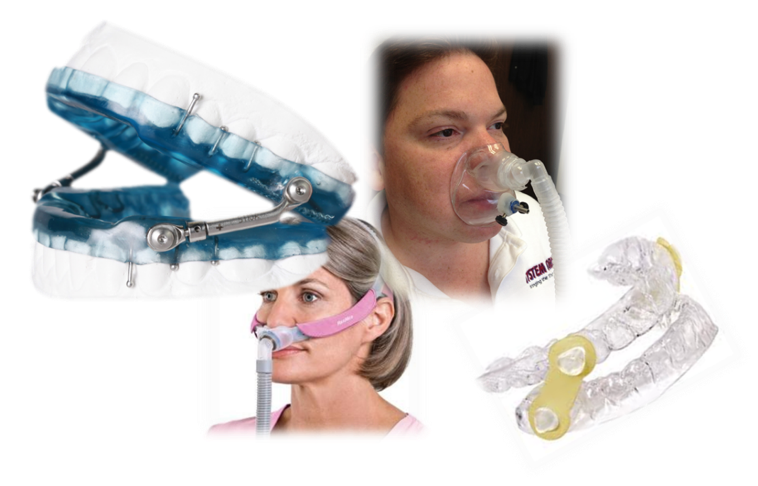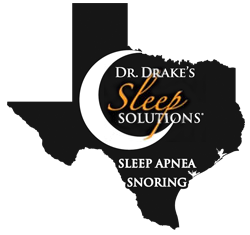28 Mar Understanding your Treatment Options
Sleep Apnea Treatment in San Antonio
 The ONLY way to know whether or not you have sleep apnea is to undergo a sleep study. Once you have been diagnosed with sleep apnea, your doctor will very likely recommend CPAP (Continuous Positive Airway Pressure) for you. CPAP has been around for a long time, since the early ‘80’s, and physicians are familiar with it and have protocols in place to get you to the right people (usually a DME (Durable Medical Equipment) company) to get you set up with a mask, hoses, and a small compressor.
The ONLY way to know whether or not you have sleep apnea is to undergo a sleep study. Once you have been diagnosed with sleep apnea, your doctor will very likely recommend CPAP (Continuous Positive Airway Pressure) for you. CPAP has been around for a long time, since the early ‘80’s, and physicians are familiar with it and have protocols in place to get you to the right people (usually a DME (Durable Medical Equipment) company) to get you set up with a mask, hoses, and a small compressor.
f
You should know, however, that CPAP is NOT the only way to treat sleep apnea. Mandibular Repositioning Devices have been shown to be nearly as effective as CPAP, especially if your sleep apnea is mild or moderate. Your doctor may not be familiar with dental device therapy or know where to refer you, but you’re in the right place here and now. Dr. Drake is the ONLY San Antonio dentist who is credentialed as a Diplomate of the American Board of Dental Sleep Medicine.
Treatments Available for Sleep Apnea
Dental Devices
Refer to our dental devices page.
CPAP Machine
CPAP delivers room air under pressure through a hose and mask into your lungs. The air pressure is set by the sleep lab or your doctor at a level that creates a pneumatic splint to blow your airway open and keep it from collapsing. Sort of like blowing up a balloon. It is important to make sure that the pressure your machine is set at is customized just for you. The measurement used is reported in cm H20, and ranges from 0 to 25.
Masks come in various styles and sometimes you have to try more than one to find one that fits comfortably and that does not leak. CPAP hoses and masks get dirty and wear out and need to be replaced. CPAP machines come in many sizes, styles, and delivery systems. BiPAP, or Bi-Level CPAP machines have the ability to lower the pressure when it senses you are trying to exhale. (Since it can be difficult to breathe out against the air pressure coming in.) Auto PAP or APAP machines have built in sensors that attempt to adjust the pressure of the machine to a level that you need at that moment in time.
Let’s say you had three beers while watching the game tonight; that alcohol affects your airway (negatively) and your sleep apnea will be worse for a bit. There is also a machine called ASV, or Adaptive Servo-Ventilator, that is an even more specific way to deliver air but is reserved for people who have complex or central sleep apnea.
Positional Therapy
Some patients will be diagnosed with positional sleep apnea. Usually, sleep apnea is at its worst when we are on our backs. For some people, they don’t have sleep apnea when they sleep on their side but they do have sleep apnea when they sleep on their back. If this is you, you may benefit from a sleep aid that will keep you from sleeping on your back. I’ve heard of patients putting three tennis balls into a sock and then sewing that onto the back of a T shirt. There are commercial products available as well.
Weight Loss
Not many of us these days in the USA can say we are at our ideal weight. We are fat and getting fatter. So if losing weight is in your plans or has been recommended by any of your docs, then get after it. Read more about weight loss here (create link). Losing weight is more difficult when you have sleep apnea. It begs the age old question, which came first: the chicken or the egg? The weight gain or the sleep apnea? Regardless, we should strive to get to our ideal weight. Know that studies show a 10% loss in body weight equates to an equivalent reduction in your AHI (Apnea Hypopnea Index). Sleep apnea doesn’t usually go away when we lose weight, but it helps. READ MORE here.
Surgery
There are more than 30 surgeries that can be done to treat sleep apnea. Remember that your upper airway goes from your nose and mouth down to your Adam’s Apple. And everything in between. It’s all fair game when we talk about surgery. The most common surgeries done for sleep apnea appear in the list below:
- Tonsils and Adenoids Removal
- Septoplasty
- Tongue Reduction
- Radiofrequency ablation
- Uvulectomy
- UPPP (Uvulopalatopharyngoplasty)
- Turbinectomy
- Pillar Palatal Procedure
- Genioglossal advancement
- Maxillary / Mandibular Advancement


